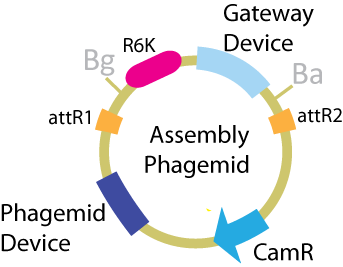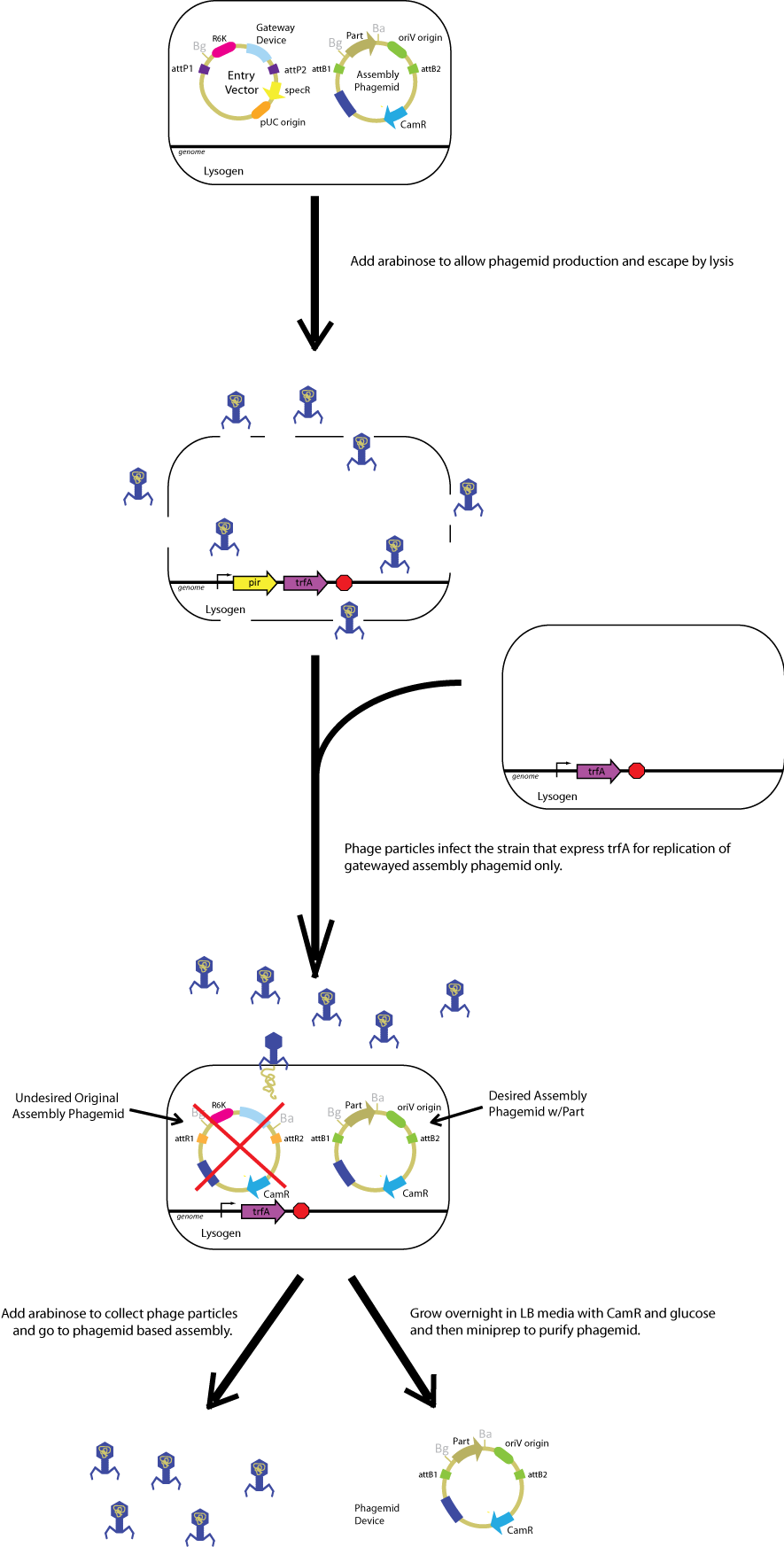Team:UC Berkeley/GatewayPhagemid
From 2008.igem.org
Introduction
The phagemid scheme was motivated by a desire to further streamline the protocol for performing Gateway in vivo. Like the genomic scheme, this method utilizes positive selection to isolate the desired product. However, it improves on this scheme because the lysis and infection steps replace mini-preps and transformations without requiring additional devices.
This scheme utilizes two methods of positive selection: conditional origins of replication (oriV and oriR6K) and the ability to be packaged into and transported by a phage. When induced with arabinose, the phagemid (plasmid that can be packaged and transported by a phage) will be copied and packaged in phages that will subsequently lyse the cell. The resulting lysate containing phages holding the plasmid of interest can be used to transport the plasmid into other cells via infection.
Details about Plasmids and Strains
Plasmids
The critical plasmid for this scheme is the phagemid, which contains the assembly vector components as well as the device allowing the plasmid to be packaged and transported by a phage. The components of this plasmid that are transferred to the desired product are the phagemid device and the antibiotic resistance.
 "
"


